I’m re-introducing the delicious and nutritious yukgaejang to you today: spicy beef and vegetable soup. This soup is smoky, spicy, and rich, with healthy hunks of sliced beef and plenty of vegetables that are soft, but not mushy—they’re full of earthy mountain flavor from gosari (fernbrake). Served with rice, it’s a satisfying, warming meal.
I made a video for this recipe years ago. It was on my first low-def camera, and eventually the music was removed in a copyright claim. Even though the video was rough, the recipe was very good and many people used it to make delicious yukgaejang. I thought the time was right to remake the video in HD and rewrite the recipe.
When Koreans make yukagejang, they always make it in large batches to make it worth the effort. Extra yukagaejang is full of good stuff and never goes to waste: you can bring some to your friend’s house, or a close neighbor may get a knock at the door and find you there with some yukgaejang to share!
It’s also common for Korean moms to make a big pot of yukagaejang to keep their family sustained while goes away for an extended time. That way she can visit her own mom and not worry about her children and husband starving at home. It can keep in the fridge for 3 to 4 days, or up to 1 week if you reheat it every other day. One of my readers told me he divides it into portions and then freezes them, and then takes out a portion whenever he wants some for a meal. Good tip!
Homemade yukgaejang is always better than yukgaejang at a restaurant, because you can take care to add a lot of the best ingredients, perfectly prepared. Some restaurants might not include gosari, either. It’s an essential ingredient!
Enjoy my updated yukgaejang recipe and let me know how yours turns out!
Ingredients
Serves 4
- 1 pound beef brisket, cut into several pieces along the grain 3 inch long, soaked in cold water for 10 to 20 minutes, washed, and drained
- 4 dried shiitake mushrooms
- 1 medium onion, cut in half
- 12 ounces (about 3 cups) mung bean sprouts (you can grow your own!), washed and strained
- 3-4 large green onions (dae-pa) or 14-16 green onions, cut into 2½ inch long pieces
- 6 ounces of soaked (or fresh) gosari (about 2 cups), cut into 2½ inch long pieces
- 8 cloves of garlic, minced
Sauce
- ¼ cup Korean hot pepper flakes (gochugaru)
- 1 tablespoon kosher salt
- 1 tablespoon soy sauce
- 1 table spoon toasted sesame oil
- 1 tablespoon olive oil (or any cooking oil)
On the side
- Extra kosher salt
Directions
Start cooking the beef, mushrooms, and onion:
- In a large pot, bring 3 quarts (12 cups) of water to a boil. Add the beef along with the dried shiitake mushrooms and the onion.

- Cook for 1 hour over medium high heat.
While it boils, make the seasoning sauce and prepare the vegetables:
- Combine the sauce ingredients in a bowl and mix it well.

- Cover with plastic wrap and set aside.
- Put the mung bean sprouts, green onions, gosari, and garlic in a large bowl.

Make the soup:
- 1 hour later, check the beef. Take a sample chunk and split it with your fingers or fork. If it splits nicely, it’s done. If it’s a little tough to split, let it cook for 10 more minutes. As stock boils off, you want to maintain about 10 cups’ worth, so add some water.
- When it’s done, remove the beef, onion, and mushrooms with a slotted strainer.
- Let the beef and mushrooms cool down and discard the cooked onion.
- Mix the vegetables with the seasoning sauce by hand until well incorporated. Add to the boiling stock.

- Cover and cook 20 minutes over medium high heat until the vegetables are cooked through and tender, but not mushy.
- Slice the mushrooms and pull the beef apart into strips. Add to the boiling soup and cook another 10 minutes.


Serve:
Maangchi's Amazon picks for this recipe
It's always best to buy Korean items at your local Korean grocery store, but I know that's not always possible so I chose these products on Amazon that are good quality. See more about how these items were chosen.



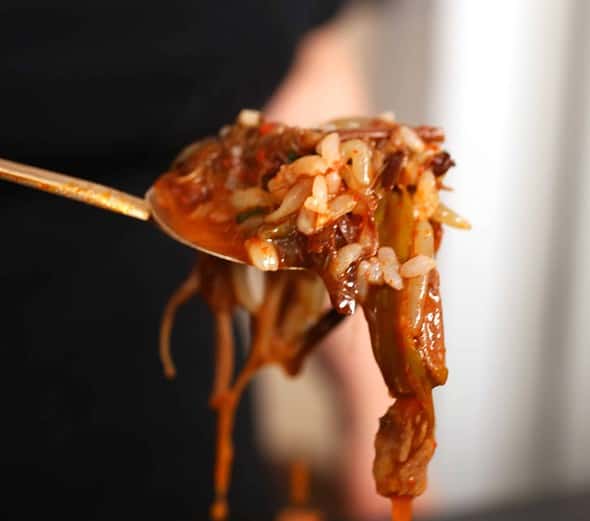
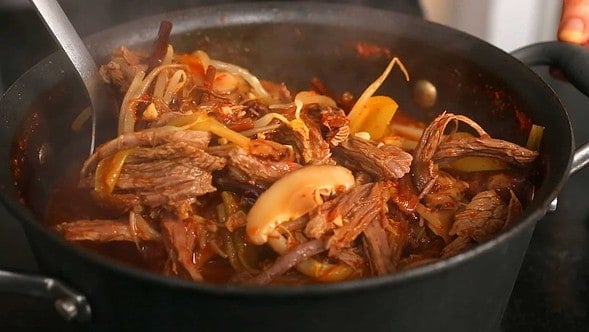
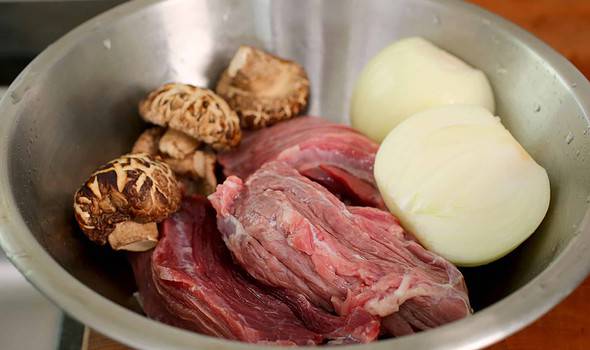
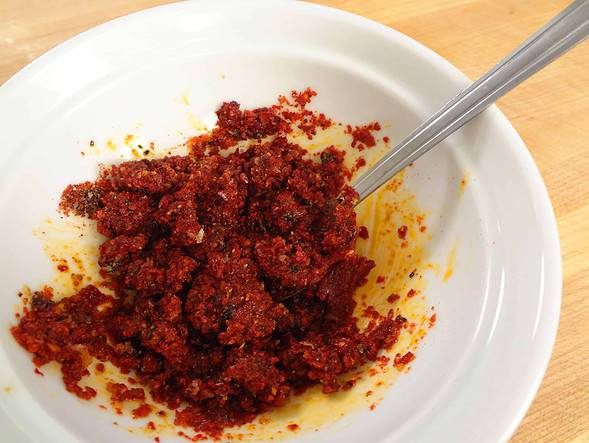
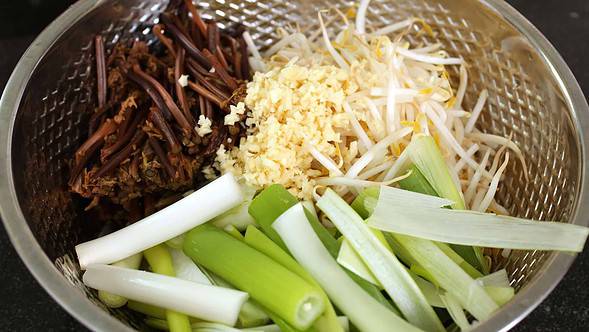
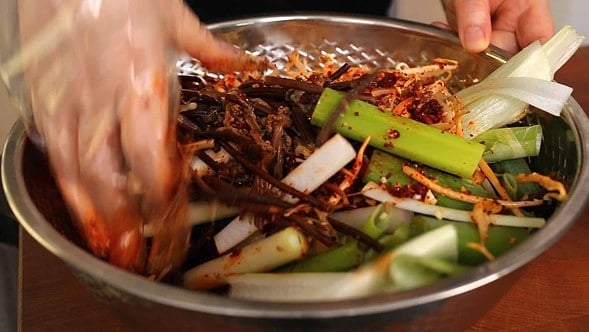
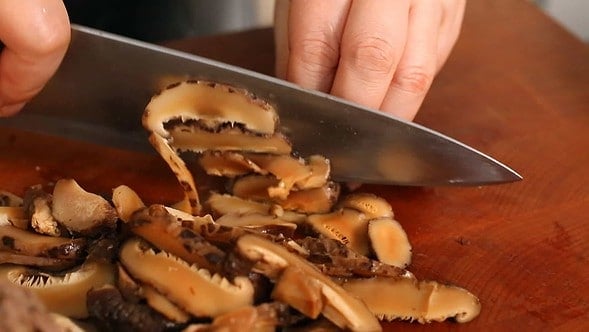
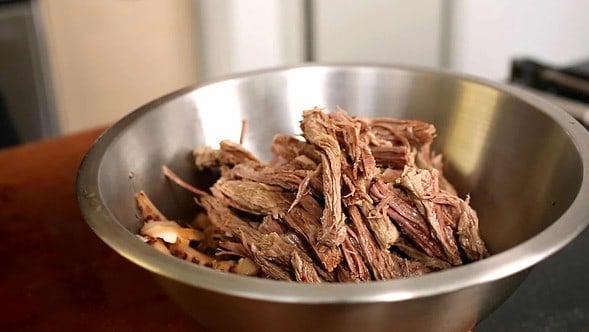
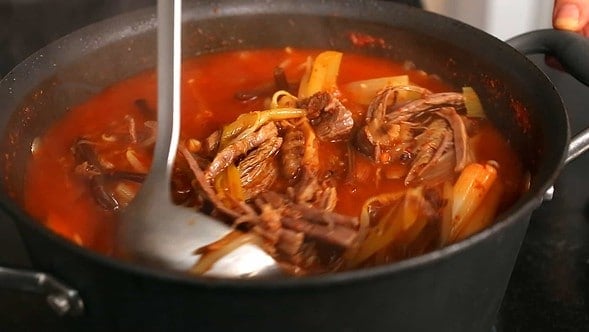








![[OTTOGI] Premium Roasted Sesam...](https://m.media-amazon.com/images/I/41DixbNS9AL._SL160_.jpg)






















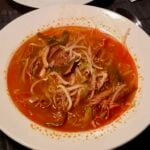
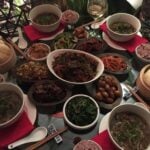
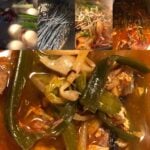
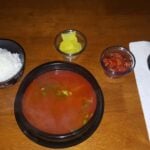
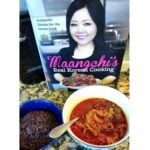

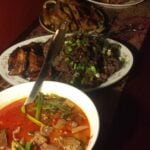

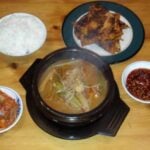
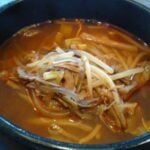
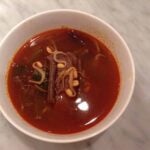

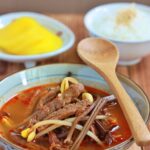

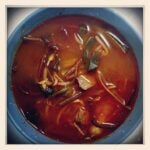
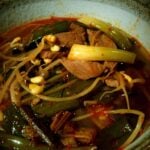
This was really good! My family loved it— even my brother ended up having seconds. The beef was very tender and the broth flavorful. Made my whole kitchen smell amazing!
The only thing I would change on is that the beef took about an hour and a half, not an hour.
See full size image
This is a delicious recipe. Thanks, Maangchi for making Korean cuisine so accessible.
Maanchi, can you please come up with an Instant Pot/pressure cooker version for the “cooking beef” step? Your recipe says about 1 hour, but it took me 2 hours.
If you give us the Instant Pot version, it should take exactly the same amount of time for everyone. And we don’t have to keep checking the pot. And I can leave the house without worrying about burning the house down. And we don’t have to keep refilling water. :)
Next time, I’ll try Instant Pot Meat/Stew for 40 mins, and report back here.
I made this again on the stove. (I forgot about this comment. :)
It’s been 90 minutes and the beef isn’t anywhere close to tender. I’ve had this problem with Maangchi’s other beef soup recipes. I get beef brisket from Hankook in Sunnyvale. Maybe I’m buying the wrong kind of meat?
I love hankook market and kyopo market, but I actually buy all my stew and soup meats at Mexican markets because I find they are cheaper and just as good quality if not better! For some reason the meats at Korean markets are often overpriced IMO. Maybe try that out? I usually buy meat for stew at Chavez and its super tender after an hr or so.
It’s a little late but you could probably cook the brisket in an Instant Pot for 30 minutes on high and 10 minute natural pressure release to start.
My friend and I went to a popular (and pricey) Korean restaraunt for lunch a few days ago, and I ordered their Yukejang to compare with this recipe which I’ve made a few times. Yours is much better! Their broth was too weak, and not enough flavor compared to yours. I took the leftovers home and jazzed them up and then it was great!
How can I replace the kelp and anchovies broth for this?? And I can’t find brisket what other beef can I use that will shred like it ?
This one of my all time favourite soups. I make this when I really don’t want to be bothered. I let it boil and boil and do its favourful thing.
I think I will make some now.
I made this recipe instead of with beef with spanish Ibérico pork meat, because i only had that at home. It tastes really good too not like the original one but more like some sort of fusion between Yukgaejang and spanish soups. Really good haha :D
BTW, I haven’t tried this recipe, but I have made your old recipe many many times. It was AWESOME! I quadruple it these days (sometimes more) because it freezes very very well. I used to add some homemade beef bouillon to it (no salt — made from bones) to give it a stronger beef flavor. I also added a lot of cayenne (thinking about trying Korean capsaicin sauce this time — the stuff often used in buldak to make it extremely hot). Can you provide a link to the old recipe so I can compare and contrast the two? Please? It’s getting cooler — perfect time for this dish or dak komtang, seolleongtang, galbitang, samgyetang… etc.
I swear the video I watched whenever I made this dish referenced toran (you substituted celery). I have a whole lot of dried toran. My wife (Korean) INSISTS that I use toran but I am not sure how much to use. It’s even more difficult to measure since it needs to be rehydrated. Happily, I can easily find refrigerated gosari.
How to use dried toran????
Yes, I always use toran and my wife loves it. I use about 200g…that should be about 50g dried.